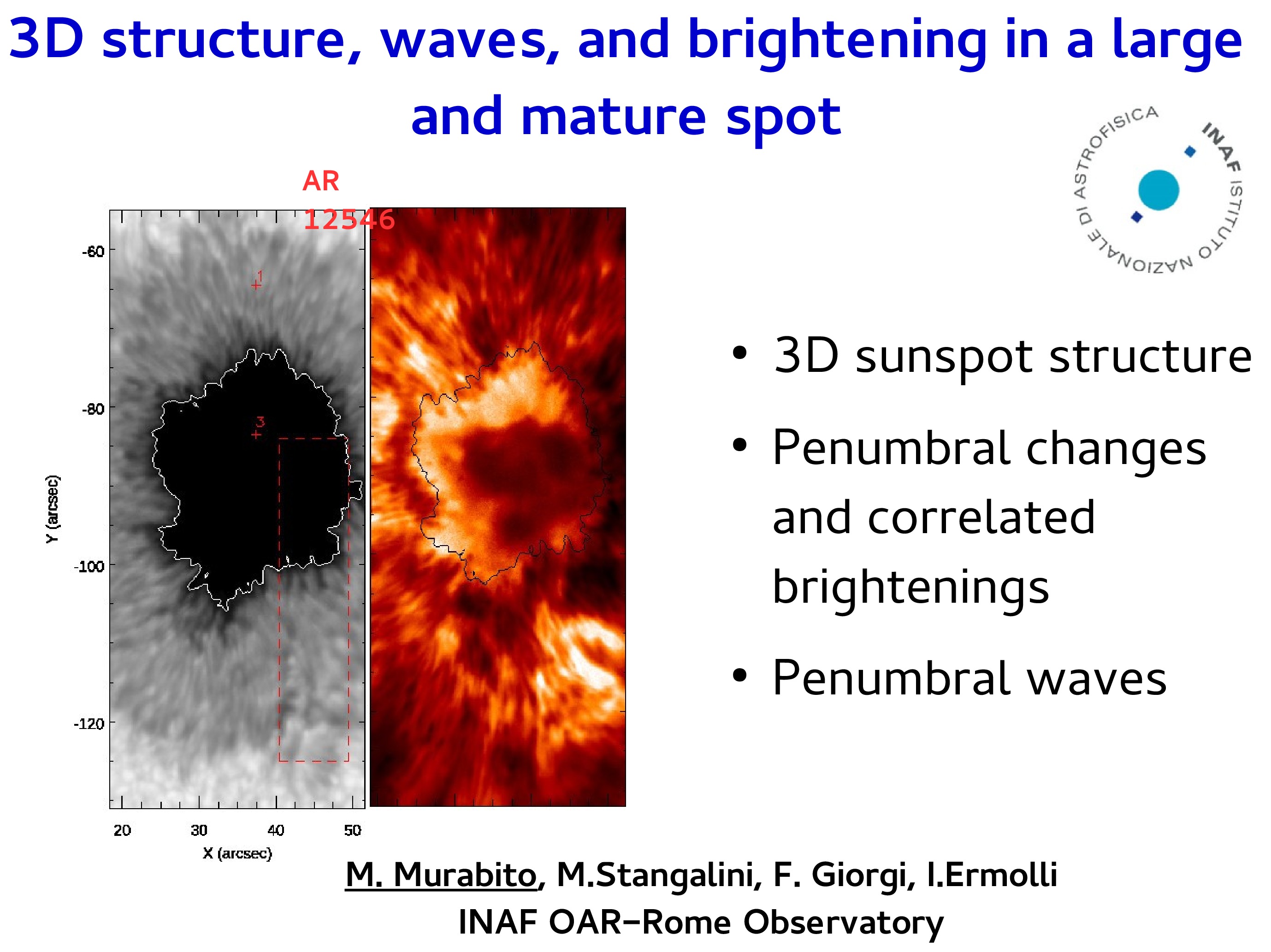Affiliation
INAF-OAR osservatorio astronomico di Roma
Main category
Natural Sciences (Astrophysics and Astrononmy)
Abstract
We analyzed spectropolarimetric data in the Fe I 617.3 nm and Ca II K 854.2 nm lines of the sunspot in AR 12546 observed with the IBIS at the Dunn Solar Telescope on 20th May 2016 and co-temporal filtergrams by IRIS and SDO/AIA. The observed sunspot is one among the largest such features occurred over the last solar cycle. The IBIS data, taken under excellent seeing conditions that lasted more than three hours, were restored for seeing-induced degradations not accounted for during observations, and inverted with the NICOLE code, in order to retrieve the temperature, magnetic field, and plasma velocity of the studied sunspot as a function of optical depth and time. The umbral and penumbral regions are for the most part stable in the photosphere, while co-spatial chromospheric areas show waves in the umbra-penumbra boundary and intense brightening along penumbral filaments. We explored the origin of these chromospheric processes and their relation to changes in the 3D magnetic structure of the observed sunspot.
Do you have problems viewing the pdf-file? Download presentation
here
If the presentation contains inappropriate content, please
report the presentation. You will be redirected to the landing page.
